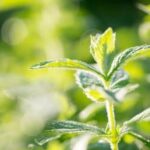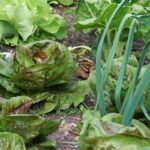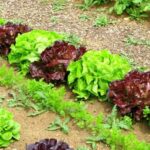Are you interested in starting a vegetable container garden in Central Texas? Whether you have limited space, poor soil quality, or simply want to try something new, vegetable container gardening is a convenient and accessible option for many Texans. In this article, we will explore the ins and outs of successfully growing vegetables in containers in the unique climate and conditions of Central Texas.
Central Texas presents its own set of challenges when it comes to gardening, from scorching hot summers to unpredictable weather patterns. However, with the right knowledge and approach, anyone can enjoy a bountiful harvest of fresh produce right from their own patio or balcony. From selecting the right vegetables and containers to dealing with pests and diseases, we will cover everything you need to know to get started and thrive in your vegetable container garden in Central Texas.
Join us as we delve into the world of central texas vegetable container gardening, as we discuss the benefits of choosing this method for growing your own food, how to select the best vegetables for your specific needs, choose the most suitable containers for your situation and utilize essential tips that will ensure success.
Stay tuned for expert advice on watering and fertilizing best practices, pest management techniques specific to central texas gardening climate; all culminating with harvesting tips that will help maximize yield.
Get ready to embrace the beauty and convenience of vegetable container gardening in Central Texas.
Benefits of Vegetable Container Gardening in Central Texas
When it comes to vegetable container gardening in Central Texas, there are numerous benefits that make this method of gardening an attractive option for many individuals. From convenience to flexibility and accessibility, there are plenty of reasons why container gardening is a great choice for Central Texas residents.
Adaptability to Limited Space
One of the major benefits of vegetable container gardening in Central Texas is its adaptability to limited space. Many individuals living in urban areas or apartments may not have access to a traditional garden space, making container gardening the perfect solution. By utilizing containers, individuals can grow their own vegetables on balconies, patios, or even indoors.
Climate Control
Central Texas is known for its hot and dry climate, which can sometimes be challenging for traditional outdoor gardens. With vegetable container gardening, individuals have the ability to control the environment in which their plants grow. Containers can be easily moved into shaded areas during extremely hot days or brought indoors during harsh weather conditions.
Reduced Maintenance
Container gardening also offers reduced maintenance compared to traditional gardening methods. When growing vegetables in containers, there is less weeding and soil tilling required. Additionally, pests and diseases may be easier to manage when confined to containers, making maintenance much more manageable for busy Central Texas residents. Overall, the reduced maintenance needed for vegetable container gardening can make the process more enjoyable and less time-consuming.
These benefits make vegetable container gardening a practical and rewarding approach for individuals looking to grow their own fresh produce in Central Texas. Whether you’re new to gardening or simply looking for a more convenient way to grow vegetables, container gardening may be the perfect fit for your lifestyle in this region.
Selecting the Right Vegetables for Container Gardening in Central Texas
When it comes to selecting the right vegetables for container gardening in Central Texas, it’s important to consider the region’s hot and dry climate. Some vegetables are better suited to survive and thrive in these conditions, making them ideal choices for your container garden. One of the most important factors to consider is the vegetable’s heat tolerance and ability to withstand drought-like conditions.
Some of the best vegetables for container gardening in Central Texas include tomatoes, peppers, eggplants, and herbs like basil, rosemary, and thyme. These vegetables are known for their heat resistance and can handle the intense Texas sun. Additionally, root vegetables like carrots and radishes can also be grown successfully in containers as long as they receive adequate water and are planted in a deep enough container.
Another consideration when selecting vegetables for your Central Texas container garden is the length of the growing season. With a longer growing season in this region, you have the opportunity to grow multiple crops throughout the year. Vegetables like lettuce, spinach, and kale thrive in cooler temperatures and can be grown during the fall and winter months, while warm-season crops like tomatoes and peppers can be harvested during the spring and summer.
It’s important to keep in mind that not all vegetables are suitable for container gardening due to their size or growth habit. Vegetables that require a lot of space or have extensive root systems may not be well-suited for containers. However, with proper planning and selection, you can create a diverse and thriving vegetable container garden in Central Texas.
Choosing the Perfect Container for Your Central Texas Vegetable Garden
When it comes to vegetable container gardening in Central Texas, selecting the right container is crucial for the success of your garden. The size, material, and drainage capabilities of the container can greatly impact the growth and health of your vegetables. Here are some tips for choosing the perfect container for your Central Texas vegetable garden:
- Size: Consider the mature size of the vegetables you plan to grow and choose a container with enough space for their roots to spread out. Larger vegetables like tomatoes or peppers will require a larger container, while smaller plants like lettuce or herbs can thrive in smaller pots.
- Material: Opt for containers made from breathable materials such as terracotta or fabric. These materials allow for proper air circulation and help prevent root rot, which can be a common issue in the hot and humid climate of Central Texas.
- Drainage: Good drainage is essential for successful vegetable container gardening in Central Texas. Look for containers with holes at the bottom to allow excess water to escape. You can also consider adding a layer of gravel at the bottom of the pot to improve drainage.
In addition to these factors, it’s important to consider the aesthetic appeal and portability of your containers. Since Central Texas has a diverse climate with hot summers and mild winters, you may want containers that are easy to move around based on sun exposure and temperature needs. With these considerations in mind, you can choose the perfect containers for your Central Texas vegetable garden and set yourself up for a bountiful harvest.
By paying attention to these details when selecting your containers, you can ensure that your Central Texas vegetable container garden thrives throughout the season. Whether you opt for traditional terracotta pots or innovative fabric grow bags, choosing the right containers is an essential step towards creating a successful and productive vegetable garden in Central Texas.
Essential Tips for Successful Central Texas Vegetable Container Gardening
Vegetable Container Gardening in Central Texas is a practical and enjoyable way to grow your own produce, regardless of limited space or poor soil quality. To ensure successful container gardening in Central Texas, there are some essential tips and guidelines to follow.
First, it’s important to choose the right location for your vegetable containers. Most vegetables require at least 6 hours of sunlight per day, so finding a sunny spot is crucial. In Central Texas, where the climate can be hot and dry, it’s also important to consider providing some shade during the hottest part of the day to prevent plants from scorching.
Next, selecting the appropriate containers for your vegetable garden is key. Make sure that your containers have good drainage holes to avoid waterlogging the roots of your plants. In Central Texas, clay or ceramic pots may be more suitable than plastic as they offer better insulation from the heat. Additionally, consider the size of your container – larger containers will retain moisture better than smaller ones.
Another essential tip for successful vegetable container gardening in Central Texas is choosing the right soil mix. The soil in Central Texas tends to be alkaline and nutrient-poor, so opting for a high-quality potting mix or creating a custom blend with compost and other organic matter is essential for providing the necessary nutrients and pH balance for healthy plant growth.
| Essential Tips | Guidelines |
|---|---|
| Choose the right location | Ensure at least 6 hours of sunlight per day; provide shade during hottest part of day |
| Select appropriate containers | Ensure good drainage; consider using clay or ceramic pots; opt for larger containers |
| Choose the right soil mix | Opt for high-quality potting mix; consider creating a custom blend with compost and organic matter. |
Best Practices for Watering and Fertilizing Your Container Garden in Central Texas
Growing vegetables in containers in Central Texas can be a rewarding and productive endeavor, but it also requires careful attention to watering and fertilizing practices. With the hot and dry climate of Central Texas, it’s important to establish best practices for keeping your container garden healthy and thriving.
Watering Your Container Garden
In the scorching heat of Central Texas, proper watering is crucial for the success of your vegetable container garden. The key is to ensure that your plants receive an adequate amount of water without overwatering them. Be mindful of the specific water needs of each type of vegetable you are growing, as some may require more frequent watering than others. Consider installing a drip irrigation system or using self-watering containers to help maintain consistent moisture levels.
Fertilizing Your Container Garden
In addition to proper watering, fertilizing your vegetable container garden is essential for providing the necessary nutrients for healthy plant growth. Choose a high-quality, slow-release fertilizer or organic compost to replenish the nutrients in the soil. Central Texas soil tends to be low in organic matter, so adding compost regularly can help maintain soil fertility. Be cautious not to over-fertilize, as this can lead to excessive vegetative growth at the expense of fruit production.
Monitoring and Adjusting
Regularly monitor the moisture levels in your containers by checking the soil using your finger or a moisture meter. Adjust your watering schedule as needed based on weather conditions and plant requirements. Likewise, keep an eye on the health and growth of your plants to determine if they may need an additional dose of fertilizer during their growing season.
By following these best practices for watering and fertilizing your vegetable container garden in Central Texas, you can create an environment where your plants will thrive despite the challenging climate. With careful attention and consistent maintenance, you’ll be able to enjoy bountiful harvests of fresh vegetables from your container garden all season long.
Dealing With Pests and Diseases in Central Texas Vegetable Container Gardening
Dealing with pests and diseases is an important aspect of maintaining a successful vegetable container garden in Central Texas. Fortunately, there are several methods and practices that can help prevent and manage these issues, allowing you to enjoy a bountiful harvest.
Here are some essential tips for dealing with pests and diseases in your Central Texas vegetable container garden:
- Regularly inspect your plants: Keep a close eye on your plants for any signs of pest infestation or disease. This can include unusual spots on the leaves, holes in the foliage, or any unusual discoloration.
- Practice crop rotation: If you notice any signs of disease in one of your containers, avoid planting the same type of vegetable in that container for the next growing season. This helps prevent the spread of diseases and pests.
- Use organic pest control methods: Consider using natural remedies such as neem oil, insecticidal soaps, or homemade insect sprays to manage common pests like aphids, caterpillars, and mites.
Additionally, it’s important to maintain good gardening practices such as proper spacing between plants, adequate air circulation, and regular watering to keep your vegetables healthy and resilient against potential pests and diseases.
By being proactive and diligent in monitoring your container garden, you can effectively deal with any pests or diseases that may arise, ensuring a thriving and productive harvest of fresh vegetables.
Harvesting and Enjoying the Fruits of Your Labor in Central Texas Vegetable Container Gardening
When it comes to harvesting your vegetables, timing is key. Different vegetables have different optimal harvest times, so it’s important to familiarize yourself with the specific requirements of each plant in your container garden.
For example, tomatoes should be picked when they are fully colored and slightly soft to the touch, while leafy greens like lettuce and spinach are best harvested when they are young and tender. By paying attention to these nuances, you can ensure that you’re picking your vegetables at their peak flavor and quality.
After harvesting your vegetables, it’s time to savor the rewards of your hard work. Whether you’re enjoying a crisp salad made with freshly picked greens or savoring the taste of just-picked tomatoes straight from the vine, there’s something special about eating food that you’ve grown yourself.
Central Texas vegetable container gardening allows you to take control of what goes into your food and enjoy the unmatched flavor of homegrown produce. So take a moment to appreciate all that you’ve accomplished as you relish the delicious flavors of your harvest.
Conclusion
In conclusion, vegetable container gardening in Central Texas offers a beautiful and convenient way to enjoy fresh produce right at your fingertips. The benefits of this gardening method are numerous, from maximizing limited space to avoiding common soil-borne diseases. By selecting the right vegetables and containers, following essential tips for success, and practicing proper watering and fertilizing techniques, you can create a thriving garden in even the smallest outdoor spaces or on your patio.
One of the greatest rewards of Central Texas vegetable container gardening is being able to harvest and enjoy the fruits of your labor. Imagine plucking ripe tomatoes, crisp lettuce, or vibrant bell peppers from your own containers and savoring them in your favorite home-cooked meals. The sense of satisfaction that comes from growing your own food is unparalleled, and it’s an experience that everyone should have the opportunity to enjoy.
As you embark on your vegetable container gardening journey in Central Texas, don’t be discouraged by potential pests or diseases. With proactive prevention and quick action when necessary, you can keep your plants healthy and thriving throughout the growing season.
Embracing this form of gardening not only adds beauty to your outdoor space but also provides a sustainable source of fresh produce for your table. So roll up your sleeves, get those containers ready, and start reaping the rewards of vegetable container gardening in Central Texas.
Frequently Asked Questions
What Vegetables Can You Grow in Pots in Texas?
In Texas, it is possible to grow a variety of vegetables in pots, including tomatoes, peppers, eggplants, and herbs like basil and cilantro. These plants thrive in the warm climate of Texas and can easily be grown in containers.
What Vegetables Do Well in Central Texas?
Central Texas provides a great environment for growing vegetables such as tomatoes, peppers, squash, zucchini, cucumbers, okra, and various herbs. The hot and dry weather in Central Texas is suitable for these vegetables to flourish with proper care and watering.
What Vegetables Grow Well Together in a Container?
Several vegetables can be grown together in a container due to their compatibility and space requirements. For example, tomatoes and basil make great companions since they have similar water and sunlight needs.
Carrots and radishes also grow well together since they have different root depths and don’t compete for space. It’s important to consider each vegetable’s growth habits when planting them together in a container garden.

If you’re looking to get into vegetable gardening, or are just looking for some tips on how to make your current garden better, then you’ve come to the right place! My name is Ethel and I have been gardening for years. In this blog, I’m going to share with you some of my best tips on how to create a successful vegetable garden.





